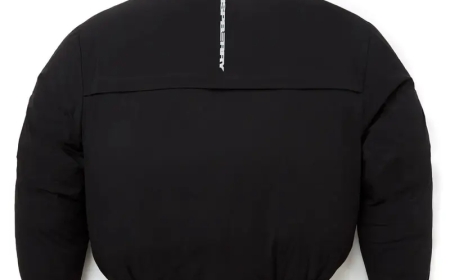The Rise of Modern Steel Cabinet Design in Functional Spaces
In todays fast-paced world where organization and space management are crucial for productivity, steel cabinet design has emerged as a reliable and aesthetic solution across both residential and commercial sectors. Steel cabinets are no longer just about strength and durability; they now combine style, versatility, and functionality in one cohesive package. Whether you are furnishing a corporate office, a home workspace, a laboratory, or a garage, modern steel cabinets cater to various needs with precision-engineered designs that optimize space without compromising on looks. Their sleek finishes, modularity, and long lifespan have made them a preferred choice for architects, designers, and facility managers around the world. This shift toward metal-based furniture signifies a new era in interior planning where durability meets elegance through innovative design thinking.
Key Elements That Define Contemporary Steel Cabinet Design
The evolution of steel cabinet design has been remarkable. What was once viewed as purely industrial storage has transformed into a refined component of modern interior architecture. The fundamental elements that define current trends in steel cabinet design include clean lines, smooth powder-coated finishes, ergonomic handles, integrated locking systems, adjustable shelving, and space-saving dimensions. These cabinets often incorporate minimalistic aesthetics, which make them suitable for any environmentfrom minimalist home offices to sophisticated commercial setups. Another noticeable trait is the increased use of neutral tones like grey, white, and black, which complement various decor styles while keeping the ambiance professional and clean. Advanced designs also offer smart integration options for tech devices, charging ports, or filing systems that align with digital workflows. Designers are focusing on creating user-friendly, maintenance-free cabinets that also serve as a statement piece.
Why Steel Cabinet Design Is Ideal for Office Spaces
Steel cabinet design is highly favored in office environments for multiple reasons. First, the material itselfsteeloffers robustness and longevity that significantly outlasts wood or plastic alternatives, especially in high-traffic work areas. Unlike traditional cabinetry, steel cabinets dont warp, swell, or deteriorate over time, even in regions with fluctuating temperatures and humidity. Their fire-resistant and pest-proof nature further enhances their utility in places that require secure document or equipment storage. From vertical file cabinets to lateral storage systems, every design caters to a specific need, promoting organized workflows and clutter-free environments. Moreover, the ease of cleaning and the non-porous surface make these cabinets an excellent option for businesses where hygiene is a priority. With workplaces becoming more dynamic, modular steel cabinet designs allow for flexible office arrangements, making relocation or reorganization simpler. These cabinets are also easy to brand or customize with labels and logos, offering an added touch of professionalism to your office aesthetics.
The Practical Benefits of Steel Cabinet Design in Industrial and Healthcare Sectors
In sectors like manufacturing, warehousing, and healthcare, steel cabinet design takes on a more critical role. These industries demand storage solutions that are not only durable but also capable of withstanding heavy usage, chemicals, or sensitive equipment. In industrial setups, steel cabinets are often used to store tools, spare parts, and safety gear in a manner that is accessible yet secure. They help reduce downtime and improve operational efficiency by ensuring everything has a designated place. In healthcare facilities, sterility and safety are paramount. Steel cabinets in hospitals and clinics are designed with antimicrobial coatings and easy-to-sanitize surfaces to meet stringent hygiene standards. Many medical-grade cabinets also come with reinforced doors and tamper-proof locks to safely store pharmaceuticals or confidential patient records. Their corrosion resistance and ability to endure rigorous cleaning processes make steel cabinets indispensable in environments where sanitation and safety cannot be compromised.
Trends Driving the Future of Steel Cabinet Design
The future of steel cabinet design is being shaped by a combination of sustainability, technology, and customization. As businesses and homeowners become more conscious of environmental impact, theres a growing preference for steel cabinets manufactured from recycled or eco-friendly materials. Additionally, powder coating processes now use non-toxic paints, which further reduces the environmental footprint. Smart cabinet features are also becoming more commonsuch as digital locks, RFID-based inventory tracking, and built-in lighting systems. This kind of smart functionality is particularly useful in workplaces that require inventory control or secure access. Another notable trend is personalization; users can now choose from a wide range of colors, finishes, and configurations to match their unique preferences or brand identity. Hybrid designs that incorporate glass panels, wooden accents, or matte textures offer a blend of traditional and contemporary appeal. As urban spaces continue to shrink, compact and vertical steel cabinet designs are also gaining traction among city dwellers and small businesses that need to maximize every inch of space.
Choosing the Right Steel Cabinet Design for Your Space
Selecting the appropriate steel cabinet design involves considering the purpose, available space, and aesthetic requirements. Start by identifying what items will be stored and how often youll need access to them. For documents and files, vertical cabinets with label slots and dividers are ideal. For tools and heavier equipment, opt for reinforced shelves and pull-out drawers with weight-bearing capacity. Consider the layout of your spaceif floor space is limited, wall-mounted or tall cabinets might be more efficient. Evaluate additional features such as locking mechanisms, wheels for mobility, and modular stackability. Also, pay attention to the finish and color of the cabinet so that it blends well with your interior theme. Dont overlook ergonomic factorscabinets should be easy to open and close, and shelf heights should suit your comfort. Many manufacturers now offer 3D visualization tools or virtual consultations, helping customers make informed decisions based on actual floor plans. Investing in a well-designed steel cabinet not only improves storage but also contributes to a cleaner, more productive environment.
Conclusion: Why Steel Cabinet Design Is a Long-Term Investment
In conclusion, the adoption of modern steel cabinet design is more than a trendits a strategic investment into functionality, aesthetics, and efficiency. These cabinets provide unmatched durability, practical storage, and modern styling that fits seamlessly into diverse settings. Whether used in corporate offices, medical facilities, or residential spaces, they deliver on both form and function. With evolving technology and design flexibility, steel cabinets continue to adapt to the needs of contemporary lifestyles and workspaces. For businesses or individuals seeking long-term value, reduced maintenance, and elegant storage solutions, steel cabinet design remains an unbeatable choice. If you're looking for top-quality options that blend innovation with reliability, Filing cabinets offers a comprehensive range designed to meet todays dynamic requirements.































